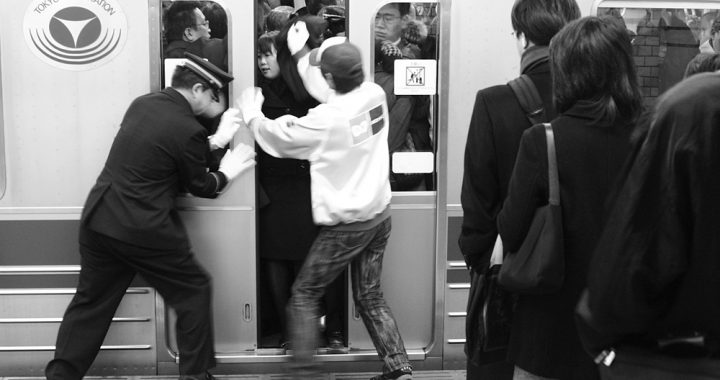So like, it’s crazy. Just this morning I was wondering something about my writing, about my life. Why do I stay away from issues? Why do I avoid conflict? What would it hurt to write characters who say something raw, bias, with zero sense, but with 100,000 degrees of emotion?
Has it ever occurred to you, young writer, sage reader, that unless you have something important to say then you had better keep your mouth shut? Gosh, it’s horrendous, this feeling of wanting to write but having nothing worth writing about. It’s purely internal, a solely individual issue. Because the world has nothing but problems, nothing but issues, life is suffering. And the world wants its issues talked about, listened to, expressed poetically.
So if you, old writer, dumb reader, aren’t putting real issues down on the page, in clashing form, then move it along.
. . .
Mr Bell gives us a great exercise to get our blood flowing. He asks us, What pushes your buttons? Some very great writing comes from a sense of outrage. Maybe it’s abortion, environmental, gun control, presidential, or it’s dirty dishes in the sink, farting on the subway, or people who put the toilet paper the wrong way.
Any one of those topics would make a great scene, a great novel, or even a great character if she is able to article her views, while at the same time “take vigorous action to vindicate that cause,” as Mr Bell puts it. I’m thinking of how Levin puts his money where his mouth is — by studying the modern farming techniques, going out in the field himself, and even debating it with old timers in their shack. Now that’s a character with balls, pardon my English. Not to mention he comes from a novel with a laser beam’s focus on modern problems, issues, and their conflicting view points, both of which are often a little right.
Did someone say conflicting view points, Russian literature? Dostoevsky practically invented the polyphonic style of having contrasting characters tear each other apart, on important issues. And we know they all came from one mad mind. So why can’t you? Why don’t I?
Let’s practice. But before that, let’s vow: to always write about important issues, to put ourselves on the page, to meet that self honestly and directly, and then — for plot juice — to confront the complete opposite view; oh, but not some scarecrow version of the opposition. No. But a greater and even stronger opposition. A powerful and seductive force asking us to join the dark side. I’m talking Darth Vadar badass. Ganondorf scary. Vegeta cool. These villains have every right to kick the hero’s ass. And, like, they should! Just so we can see what the hero is made of.
Well, enough said. Let’s practice.
. . .
Find an issue that makes your cheeks red . . . something likely to make people mad.
For this post, I choose you: people who block the entrance to the subway in Bucharest, during rush hour, especially when there is an insane amount of free space in the middle of the train car. GTFO!
Next, choose up sides. Come up with a good argument defending your position.
In case it wasn’t obvious what my view point is, let me state it: Never block train car doors. First of all, it is morally reprehensible. You don’t block the exit of a crowded theater, the door of a parked car, or the entrance to a hospital. What if there’s an emergency? You don’t block doors anywhere, period, so don’t block train car doors. Second, blocking train car doors is socially opprobrious. Similar to making others smell your armpits, or yapping loudly on your phone in pubic, by blocking train doors you are essentially telling your fellow man, “I don’t see you, I don’t care, try the next train car.” Don’t we all pay the same amount for this ride? Don’t we deserve equal and mutual respect in the big city?
Last, there is a pragmatic element which must be addressed. When you prevent someone from entering the train, especially when there are meters of open space in the middle of the train car, you are create traffic for the next train. People who don’t go on now, have to go on the next one, waste time after or before work in transit, and it’s a headache for everyone.
In New York, riders faced with a hairy arm and two straddled legs blocking the doorway had a very simple solution for this problem. They would push the shit out of you, call you a mother fucker, and then calmly occupy the empty space in the middle of the train where you should have been.
But this is Bucharest, people. This is Europe. Let’s be civilized! Let’s make room for our fellow riders, let’s ride in peace, and let’s safely move to the middle of the train, whenever possible. Which is always.
Next, and most important, come up with a good argument for the other side! Your job as the writer is to see the whole picture . . . to deliver a gripping story, not a windy lecture.
I can see why you are so upset, if life were as simple as rush hour traffic. But most times there is no one on the train, sure, no one in the middle, and no one in the seats either. By standing up, yes by the door, I am allowing senior citizens and expecting mothers a chance to enjoy the ample space of the middle. Plus, that definition of blocking the doors is rather limited. No one should block a crowded theater door, and yet we routinely line up at the door of theaters and of clubs every day.
As responsible adults we know the difference between a burning building and the “one-in-one-out” system of entering public transit. Not only that, but answer this: if we weren’t meant to stand by the door, then why are there two clean metal hand grips there, long enough to stabilize 5 or 6 hands? Surely you wouldn’t expect people supposed to stand in the middle, on a rocking train, with nothing to hold on to? That’s dangerous. Meanwhile, I stand by the door, but always look over my shoulder and step aside to let people in.
However, forget that, c’mon, you’re a hypocrite. I’ve also seen you stand at the door every day coming home from work. You’ve even waited for others to step on the train first, just so you could enter behind them and stand at the door while they politely filled the middle as you demand, or took a seat, as they pleased. It’s the priest’s classic, “Do as I say, don’t do as I do,” at least on the surface. In the end, friend, you occupy the door just like everyone else, knowing precisely why they do it. It is more convenient. You get out of the way faster. You get home quicker. And if you are a young lady, or an unsettled tourist, you can keep your back safe against the door. Holding on to the hand grip. Knowing you are safe from a crowd full of strangers.
Truth be told, this isn’t an issue worth fighting about, not compared to broken platform tiles or litter. We should focus on this problem. If you see space in the middle, by all means, go there, no one is stopping you. If you have to slip under an arm, trust me, that arm doesn’t want to be in your way any more than you want to smell its pit. Patience and understanding will get us through the horrible 40 minutes from work to home. Pop open a book, read, and chill the hell out.
Now ask yourself, “What kind of person would care most about each side of the issue?” Come up with a list for both.
I guess this is the part where you make a character to personify/articulate/act upon either side of the issue, no?
Pro Moving to the Middle: businessmen, new yorkers, a girl who no one lets on the train, train officials, fire fighters, and me.
Pro Live and Let Live: a kind grandmother, a cool grandfather, a pregnant woman, a shy tourist, and also me . . .
Cheers.




